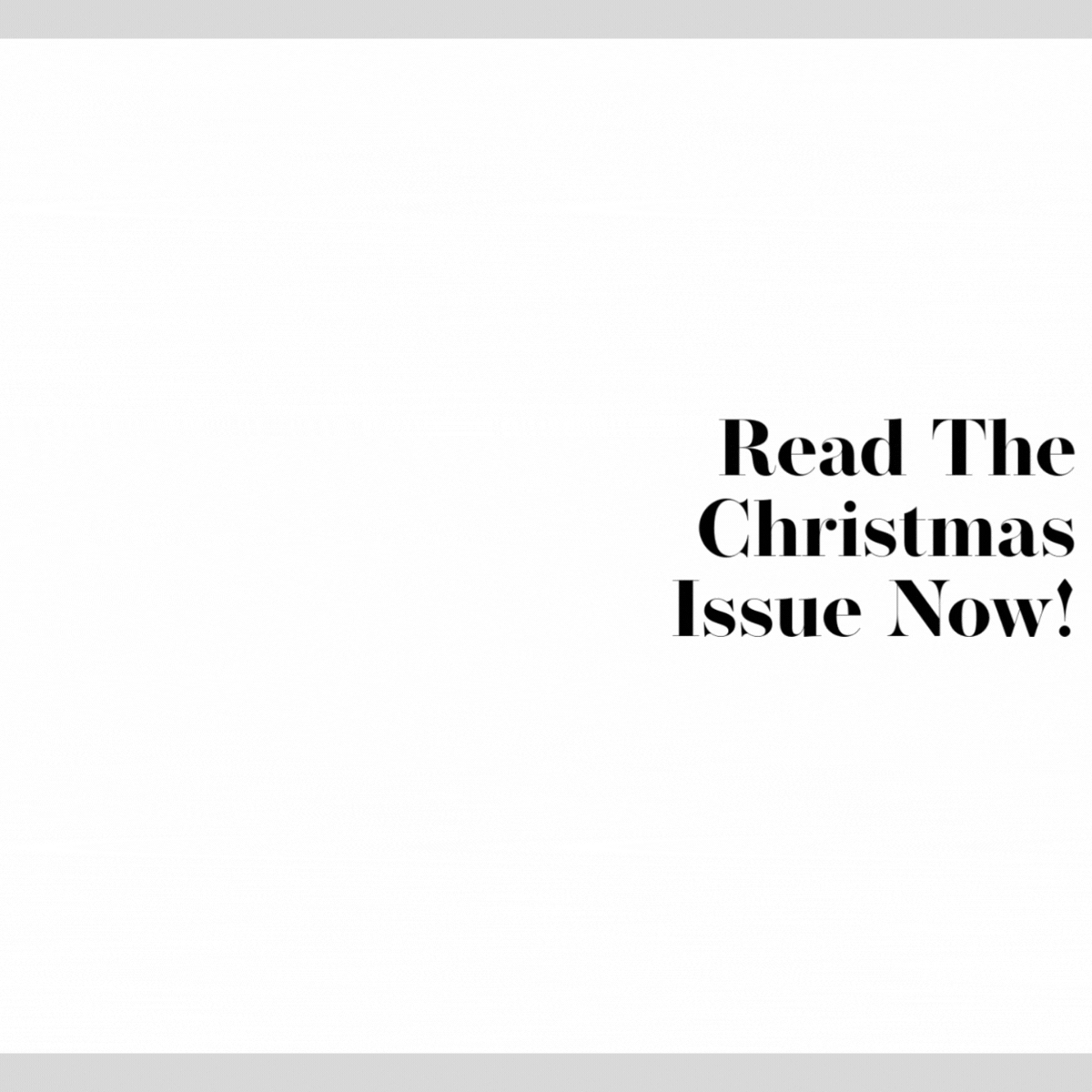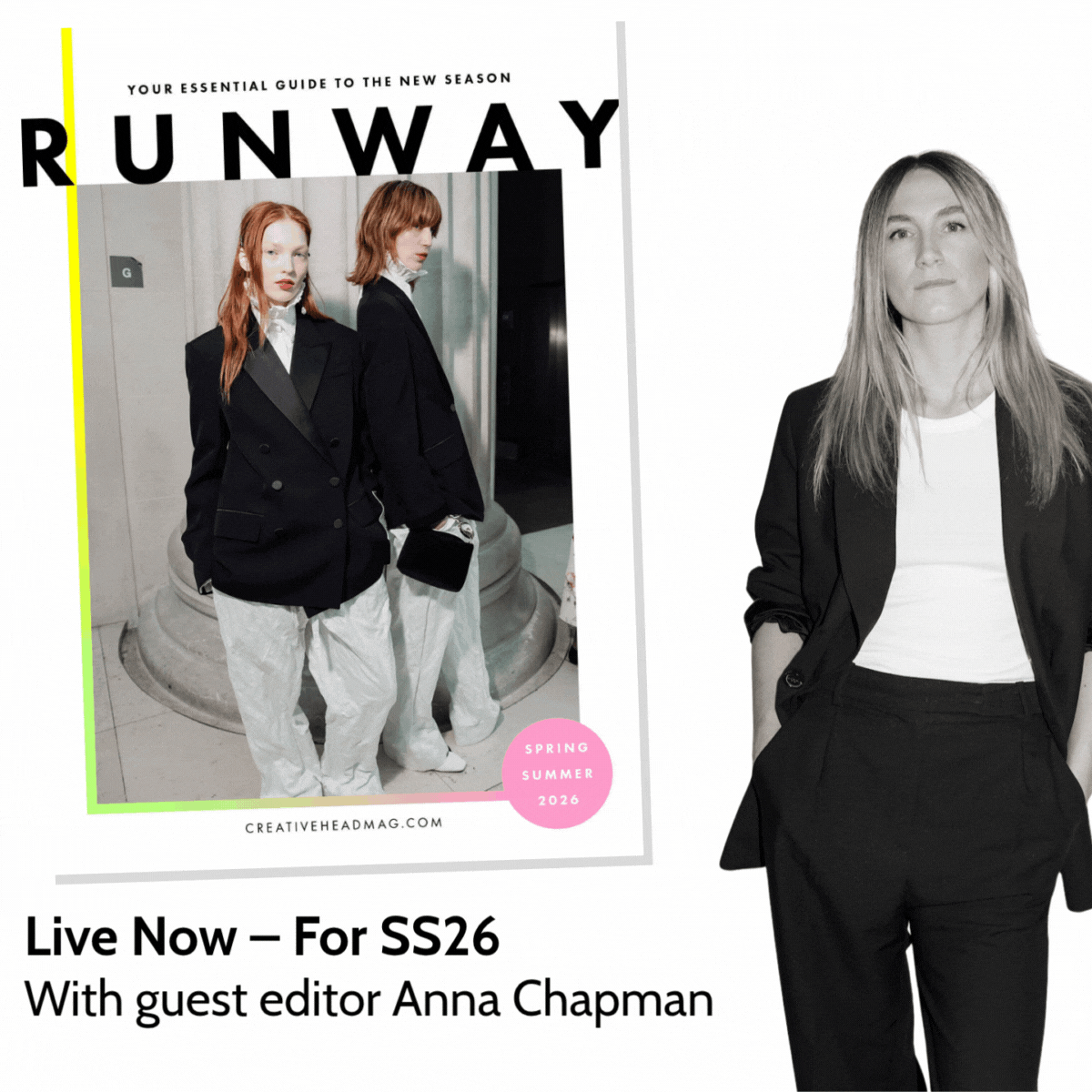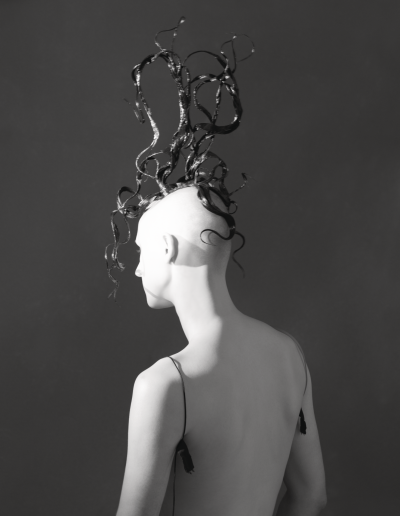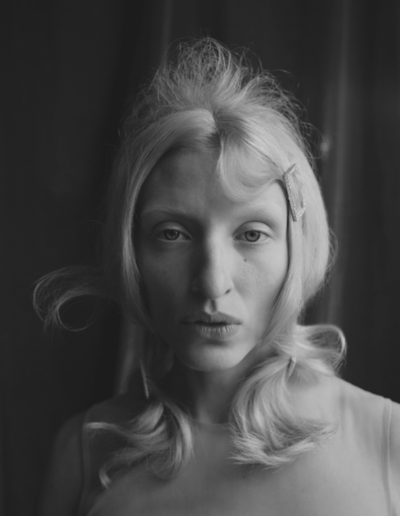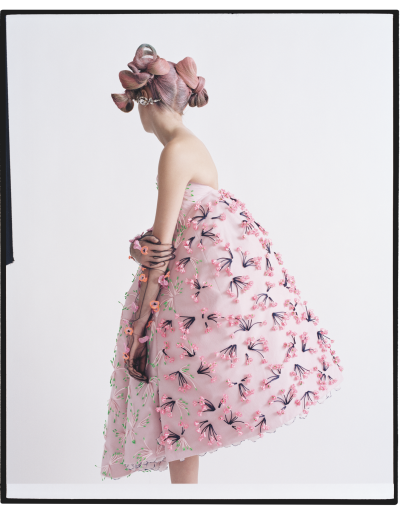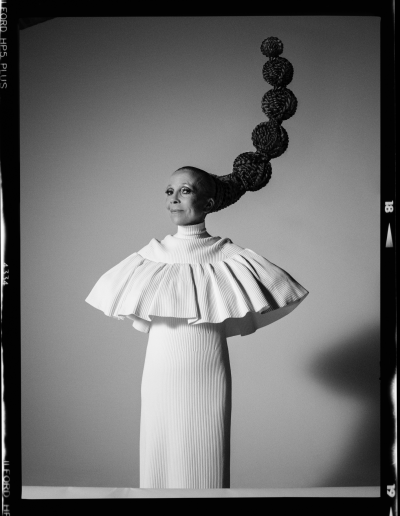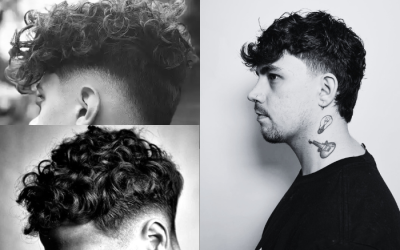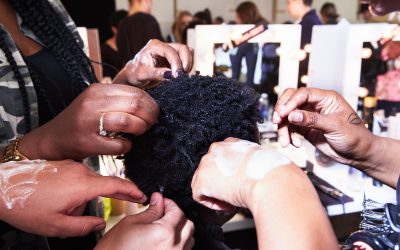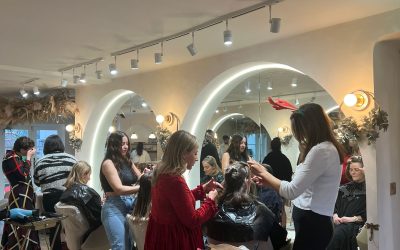Malcolm Edwards – Back On It
Session stylist Malcolm Edwards is a mass of contradictions. He’s heavily pierced and tattooed, yet his hair work is whimsical, romantic and inspired by nature. Despite looking after multiple supermodels and A-list celebrities, he’s completely unbothered by fame. And although a loner as a child, he’s known as the ultimate team player on set, a brilliant communicator who puts everyone at ease. Everybody loves Malcolm. And, let’s face it, there’s a lot about him to love. Now, after taking several lengthy career breaks due to serious illness, Malcolm is back and working at fashion’s highest level once again – Dior, Gucci and Saint Laurent, to name but a few And this time, he’s doing it on his own terms, as Creative HEAD discovered…
by CATHERINE | DOCUMENTS
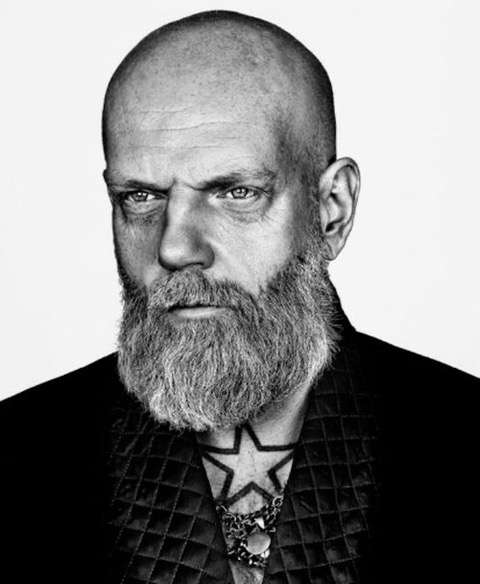 Malcolm Edwards @ LGA Management Malcolm Edwards @ LGA Management |
Malcolm, we love this comment on your Instagram: “I lived in a very urban new town, I was very tall, very chubby, very ginger and everybody knew I was kind of looking like I was going to be gay. So it was all going against me. Then I started looking at magazines and because my reality wasn’t that good where I was, I loved the fantasy. London was exploding with creativity, so I was like, that’s my tribe. I don’t care what it’s like here, that’s where I belong.” So, did London live up to expectations? And how important was it in your career as a session hairdresser? I grew up in a town called Irvine, about 20 miles south of Glasgow. I was freakishly tall – I’m 6’2” now and I haven’t grown since I was 11 – and I had a mohawk that I used to dye all sorts of colours. It caused me a lot of problems at school because I was going around like a peacock. But it was my way of going, ‘Piss off everybody. I’m not like you and I don’t want to be like you.’ I spent most of the time in corridors at school because I was always in detention. I used to model for the local salon when I was 13. I kind of got into hair from then. I used to love photography and movies – I was mad for Sofia Loren and Breakfast at Tiffany’s and all those classics – and that’s when I noticed how hair made a character. But I had no idea about the session world. I just thought, well, I’m going to give hairdressing a go. |
|
Malcolm Edwards @ LGA Management |
Malcolm, we love this comment on your Instagram: “I lived in a very urban new town, I was very tall, very chubby, very ginger and everybody knew I was kind of looking like I was going to be gay. So it was all going against me. Then I started looking at magazines and because my reality wasn’t that good where I was, I loved the fantasy. London was exploding with creativity, so I was like, that’s my tribe. I don’t care what it’s like here, that’s where I belong.” So, did London live up to expectations? And how important was it in your career as a session hairdresser?
I grew up in a town called Irvine, about 20 miles south of Glasgow. I was freakishly tall – I’m 6’2” now and I haven’t grown since I was 11 – and I had a mohawk that I used to dye all sorts of colours. It caused me a lot of problems at school because I was going around like a peacock. But it was my way of going, ‘Piss off everybody. I’m not like you and I don’t want to be like you.’ I spent most of the time in corridors at school because I was always in detention.
I used to model for the local salon when I was 13. I kind of got into hair from then. I used to love photography and movies – I was mad for Sofia Loren and Breakfast at Tiffany’s and all those classics – and that’s when I noticed how hair made a character. But I had no idea about the session world. I just thought, well, I’m going to give hairdressing a go.
So, I worked for a couple of local salons, and then I moved to Glasgow, where I worked for Alan Edwards for a couple of years. The salon was a big L’Oréal client, so I did Colour Trophy, lots of shoots and shows, and I was good at it. Eventually, Alan wanted me to be a partner in the business because I was a real grafter. But then I thought, ‘If I don’t go now, I’m never gonna go. I’m gonna get stuck.’ My friend June had gone to work for TONI&GUY in London, so I called her and asked her if she could get me an interview and the next day I got the train down.
I was in my interview with Anthony Mascolo, who knew me from the stuff I’d done with Alan, and at the time Guido was selling his credits to TONI&GUY. I said, “You’re great Anthony, but I really want to do session work,” and I think he was quite taken aback by that. But to his credit, he said, “Okay, but you will still need to do your vardering.” And that was the deal. I was vardering but I was assisting Guido at the same time.
I worked for Guido for a couple of years, until 1996. He loved how fast I worked, and he took me to jobs all across Europe, and the supermodels were on the go at the time, so it was amazing. But there came a point when I thought, I’m going to pack it all in and go travelling.
So, you nearly gave up hairdressing for backpacking?
Yes, but then Lee [Alexander] McQueen was doing his Dante show, the one with the spines, and I knew [McQueen stylist] Katy England really well, and she asked me to come and assist. And the looks were really intricate but I was working so fast and focused, and it turns out I was in [make-up artist] Val Garland’s eye-line. Val used to be a hairdresser, she had a really successful career in Australia, and she came up to me after the show, and said, “Who are you? I’ve not seen you before. You’re very good, you’re very quick, you should be talking to my agent.” And I was like, ‘Oh, right!’ So Val talked me out of going travelling, and after multiple meetings with her agent I thought, I’m going to give this a go. I’ll just do it my own way and steer clear of all the dramas. And things went fairly quickly after that. All of a sudden I was doing loads of magazines and spending all my money on my kit and hair pieces!
Why do you think you became so successful so quickly?
[Laughs] Well, there were fewer session stylists back then! But okay, I’m a real team player. And I’m a good communicator and I come well prepared. My poor assistants, though, I would have eight bags of kit! It’s since turned out I’ve got ADHD [Edwards got the diagnosis during lockdown], and I wish I’d known back then that’s what it was.
Your work is described as romantic, whimsical and inspired by nature. That’s quite incongruous, coming from a guy who’s so heavily pierced and tattooed…
I was a real loner as a kid. We lived in a massive housing development, but it was right near a river and across the river was a farm where I was allowed to play with the lambs and the calves and I would just take myself off into little fantasy lands, listening to Kate Bush and the Cocteau Twins. It was pretty grim where I was, so in my head I would always be popping off someplace else. I love nature, I think Mother Nature is amazing.
One of your key collaborators is the photographer Tim Walker. He creates fantasy worlds that require you really to push the boundaries of your art. How did you meet and what’s it like to be part of his circle?
The first time I met Tim, as I’m constantly reminded by [set designer and long-term Walker collaborator] Shona Heath, it was when I was living in New York and I was doing the walk of shame wearing a smoky eye and a pair of leather chaps and I ended up crashing Tim’s birthday party! But as soon as we started working together, we just kind of clicked. We did so many shoots at Eglingham Hall up in Northumberland and those are my fondest memories of my whole career. Because it’s a kind of faded grandeur, falling-to-pieces country house and it was just so magical – that house and the people I met through that whole experience were just gorgeous.
The V&A did a show, Wonderful Things, that celebrated Tim and his work – and you were part of that…
That’s typical of Tim, wanting to make sure everyone gets recognised. To have my hair pieces and wigs as part of the exhibit was so amazing – the proudest moment of my whole career. What’s unique about Tim’s creative process is that it’s actually as enchanting as a lot of the pictures. It’s quite a family, he has a circle of people he works with, but we all know each other really well and everybody’s even. That’s what’s nice about having a good relationship with a photographer, because you really get into all the nooks and crannies of how they work. Like, Tim uses fisheye lenses a lot, so that’s when I know I’ll have to create something that’s double the size because when he puts that lens on it, it’s going to shrink.

Photography by Sølve Sundsbø / Art + Commerce
Talking about creative process, how do you like to work?
The main thing for me is communication. I like to get as much information from the photographer about the brief, the concept, how many models and so on. I speak to the casting director, the stylist and when I’m working with Tim, I speak to the set designer – usually Shona Heath – because that’s an integral part of how he works. Some people like to do all that on the day, but for my process, I like to gain as much info as possible before the job before I even start prepping. I do as much as I can to save time on the day. I like to prep the hair as much as possible before the job – prepping extensions, preparing wigs, etc. But you still have to remain open to change and to change quickly. You can’t ever get too caught up in what your ideas were. Being fluid is super-important.
You had to take a leave of absence from hairdressing for quite some time – firstly, due to illness and then to Covid. That must have been tough.
So, 15 years ago I was diagnosed with Stage Four cancer. And I had a trial chemo that was really, really aggressive, where they fuse three different types of chemo and give it to you for seven days of each month, 24/7. Your body gets absolutely blitzed. I was lucky because it worked for me, but most of the other people on the trial passed away, sadly. I am still in remission but one of the side effects has been bone degeneration. I’ve had a lot of time off because I’ve needed so many operations on my shoulders and after Covid so many of those operations have been cancelled.
Were you scared?
The cancer episode was so full-on and so quick, I’m quite robust with stuff like that, you know? I take each day as it comes. But the cancellations have had a bigger impact, because you take time off for the operation and then it doesn’t happen. As a freelancer it means you’ve missed out on opportunities. And to have that happen 15 times… that has been a big deal. But it is what it is. You’ve just got to dust yourself down and get over yourself.
What did you learn about yourself during that time?
I felt very humbled by the people who looked after me. The doctors and nurses care for you when you’re at your worst, so it gave me a new appreciation for what they do. In fashion we get paid to play dress-up compared with what medical staff have to deal with. And then when lockdown happened, well, that was like a juggernaut caught up with me because fashion is such a fast-paced world. You’re constantly on a plane. I mean, I used to love it, but I did it a lot. So lockdown brought a completely different sense of awareness. What really stuck with me was how quickly Mother Nature repaired herself. It really blew me away. Nature is amazing. Humans are a huge problem. And Nature will prevail – that’s the bottom line. So, it did make me think about the way we jump around the world. There are a lot of flippant decisions made in fashion that are not at all eco-friendly. Covid just made me stop and reflect a little bit on what I was doing and I definitely don’t want to be going back to that same rhythm.
You’re still friends with Katy England, you hang out with former Vogue editor-in-chief Edward Enninful. Do you feel like you’re part of a crowd that is really influential and opinion-forming?
I’ve known Edward for years, since I was assisting Guido, and we are so comfortable with each other. I’m really pleased for him and the success he’s had. It’s really good that people are starting to think about things and be more inclusive, because of him.
You seem very chilled about your career. You seem more interested in working with people you chime with creatively, rather than racking up credits, in order to impress.
At the end of the day, it’s a game. Have you seen the documentary, The Price of Everything? It’s about how art became a commodity. It’s really interesting. I did a lot of music videos back in the day and we’d hear all these conversations about how the music was going to be released and what it was going up against. There was a whole labyrinth of gameplay going on there that blew me away.
There’s a lot of those elements at play in fashion as well. And I’m not that kind of player. I’d rather just work with people that I like.
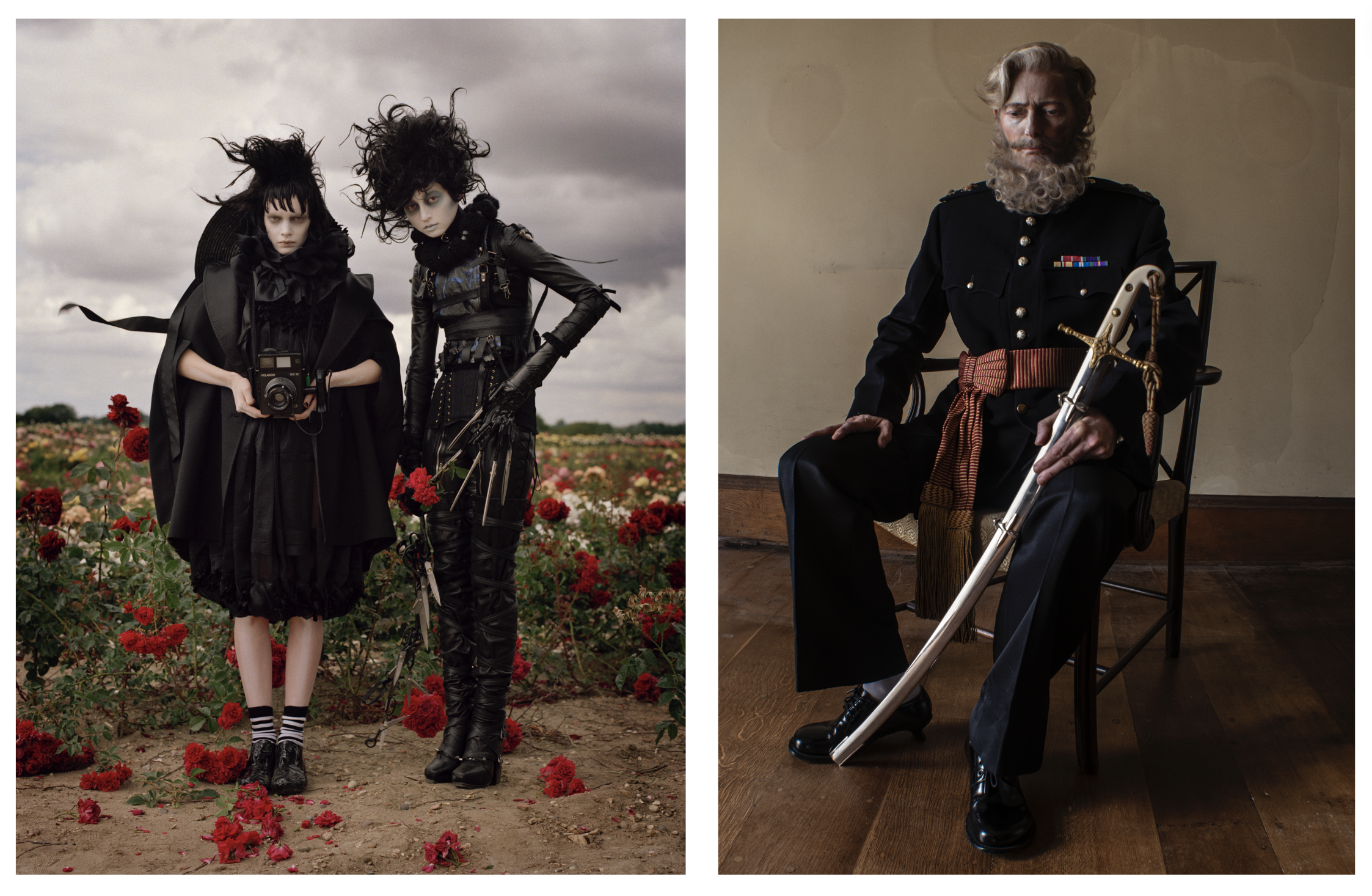
Photography by Tim Walker Studio
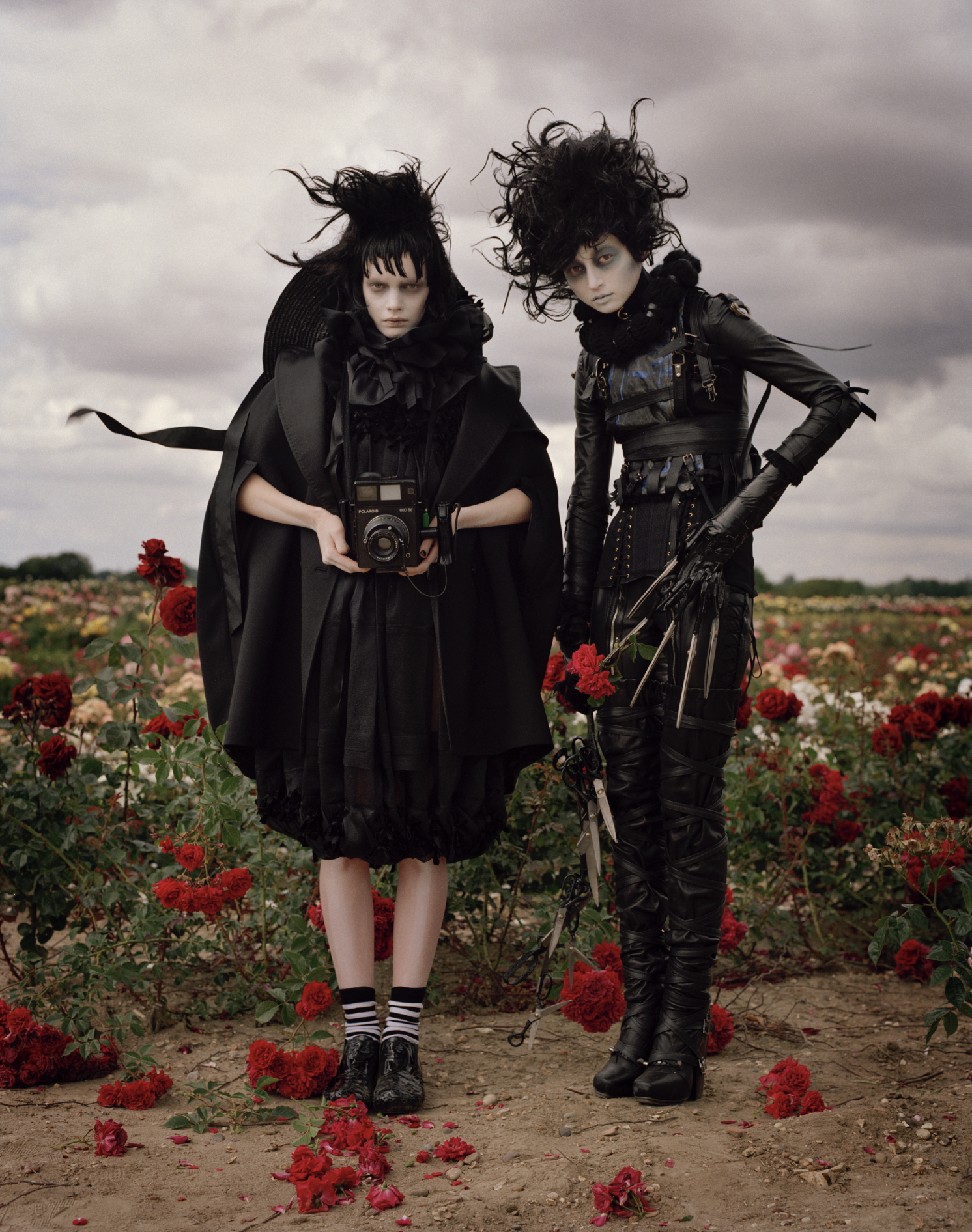

Photography by Tim Walker Studio
You did the hair for Vogue’s December 2023 front cover, Great Britain, featuring personalities including Tilda Swinton and Eddie Izzard. Do you like working with celebrities?
Sometimes. It depends on the celebrity! I mean, it can be cool getting to meet some of your heroes that you’ve loved in movies but I’m not a star-struck kind of person, to be fair. I know it carries a lot of currency for some people, but I’ll very rarely be doing a selfie unless we’ve got on really well and had a laugh together. It’s funny, working with actors and actresses, they’re so used to playing a character that when they’re just themselves they can be very vulnerable. And I do have the ability to pick people up, to lift the mood. It’s nice to be able to make people feel safe and make them feel good about themselves. And I’ve got the cheeky banter to distract them…
But that is what’s great about you, Malcolm: this big, scary-looking guy is actually a bit of a softy!
I love contradictions! It’s a big part of how I work creatively – there’s always a little twist, you know. I remember once and I was working with one of my assistants, who’d come from Nicky Clarke, and the model was Stella Tennant and we were doing this demented pompadour thing. I’d made these translucent rolls and while I was wrapping them I put a really big wrong one at the front of Stella’s head. And he’s like, “Why did you do that?” It was the complete antithesis of what he was used to at Nicky Clarke. I mean, I love gorgeous, luxurious hair but I love wrongness, as well.
Not everyone knows how to do the wrongness, though.
No, that’s true. You have to get the right right and the wrong right! Gary Gill is a great example of someone who gets the wrong right, because he’s really open to stuff like that. We’re similar ages and we both grew up in the 1980s when there was that whole mishmash of culture, art and music. Nowadays, we’re so swamped in data, we absorb and digest information differently and express ourselves differently as a result. There are pros and cons with technology. I mean, I love that you can be in the middle of nowhere, like I was growing up, and you can go on YouTube and feel connected to people all around the world.
You stopped doing the shows about 10 years ago. Why was that?
There are a lot of reasons. First, there were a lot of times where we weren’t getting paid enough. I mean, if you don’t have the money to do a show, then don’t do a show! Find a new way to present what you’re doing! And then there was the issue of me stopping and starting because of my health and my parents’ health. Because you’re only as good as your team, and it takes time to build up a team again – you have to have that momentum. I just I got really tired of the stopping and starting and it taking so much energy to get my team up to the point where it’s a machine and it can just flow. So after my mother passed away, I was just like, “You know what, I’m tapping out.”
Looking back on your career, what would you say would have been pivotal moments?
Doing Pirelli with Tim Walker was amazing. I used to look through Pirelli books when I was young, they were iconic. Getting the chance to work with [renowned filmmaker] Baz Luhrmann at Chanel was phenomenal because he’s an amazing communicator. Being on a project with him and seeing how he navigates his way through a team of hundreds was fantastic. And I remember the first time I worked with [photographer] Paolo Roversi, I was so excited and I’d spent every penny I had on hair. But it was before the Eurostar, so I had taken a Sunday flight and BA lost my bags. And Paris is closed on a Sunday evening. I eventually found a pound shop and bought a plastic doll’s beauty kit and a ball of string. That’s all I had. And when I got to the studio it turned out Guido had been working there the day before and had left half a can of hairspray and some mousse.
Thank god for Guido’s scraps!
I know! [Laughs] I’m so grateful to him for that. And it really was a pivotal moment for me because I really had to improvise. I remember it was a Kenzo special for and the models were Russian twins dressed in these vintage kimonos. And the idea was to have ivory skinned girls with punky Geisha hair. And that’s what they got – and I created it with a doll’s hair kit!
What are your five go-to products/tools on a shoot?
That would be a ball of elastic, my comb brush, a water spray, Kirby grips and my Diva Atmos dryer
Is your brain always buzzing, thinking about things to do with hair?
I’m actually going through a stage in my life where I’m trying to slow my brain down! Having loads of ideas can be a plus and it can also be a negative – there’s no point in having all that creativity, if you can’t focus. And sometimes you’ll have all the ideas and then you get on the job and things change, or the thing that you thought you were going to do is just not right. And it doesn’t matter how good the idea was, if it’s not right, you have to put it to one side and maybe it will find its place another day. So it’s about being objective and being fluid, as well being able to change.
What does 2024 hold for you, Malcolm?
I’m looking forward to starting afresh. With everything I’ve learnt about myself and my ADHD diagnosis, it’s like a new me. No, not a new me, a new awareness of myself. I can look back to when I was at school, I would drift off constantly. I would just be looking at the window and then I’d look down at the page and it might as well have been hieroglyphs. That all makes sense now, but I guess they didn’t understand things back then. So I’m not going to be like super-bare but I’m not going to be as complex as I once was. Let’s say that. I feel like this is a new chapter in my life and I’m looking forward to getting back to work with all this new-found knowledge I have.
Malcolm Edwards is represented by LGA Management
Related
Riding The Wave: The Perm Is Back – But Not As We Knew It
Things have come a long way since Dirty Dancing’s Jon and Baby mega-curly numbers
Sam McKnight: Why I’ve Joined A New Union For Fashion Creatives
Set up to tackle widespread exploitative workplace practices, Bectu Fashion UK hopes to bring about change
“It Would Be So Beautiful If More Businesses Could Take A Pause To Give Back” – Why Wildflower Closes On The Busiest Day Of The Year
Wildflower’s Give Back Day honours community, compassion and connection on the busiest retail day of the year, 23 December

